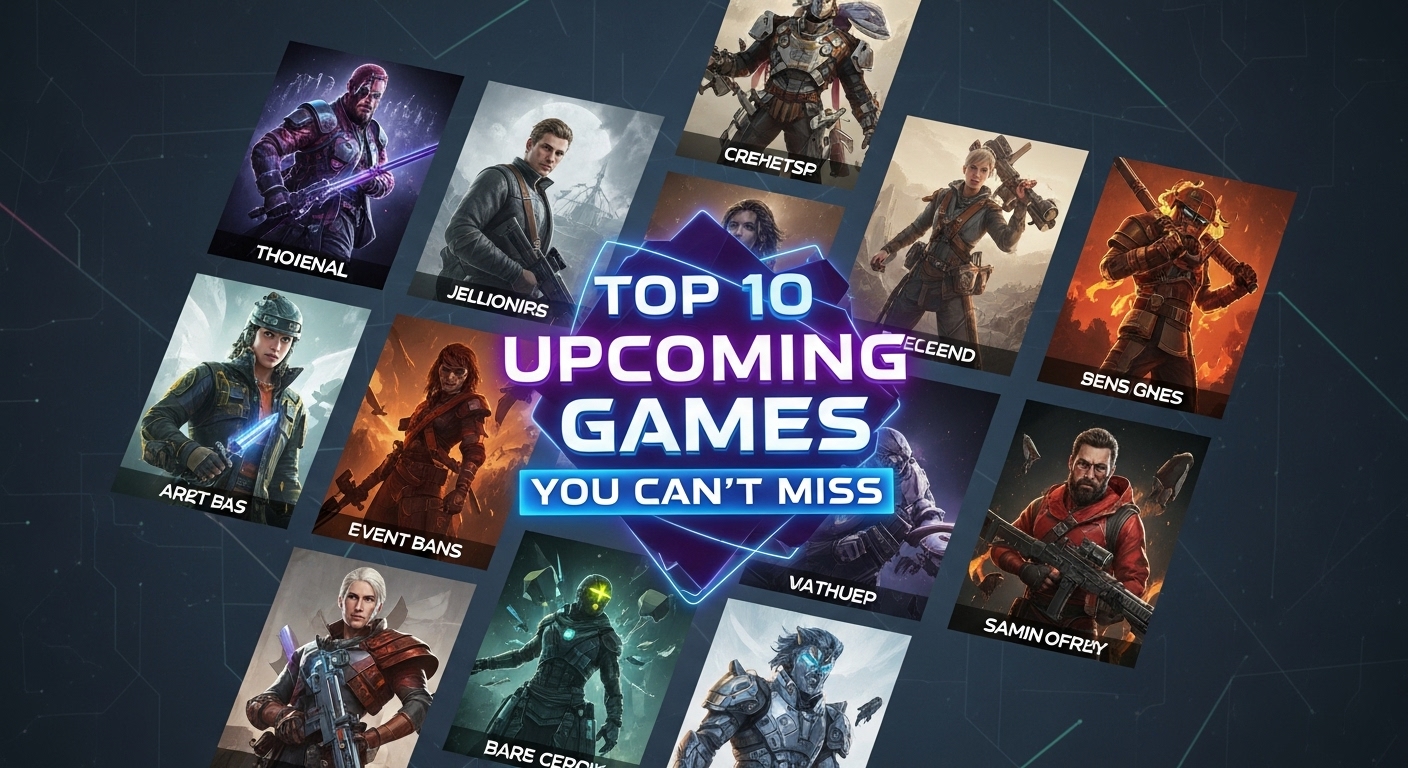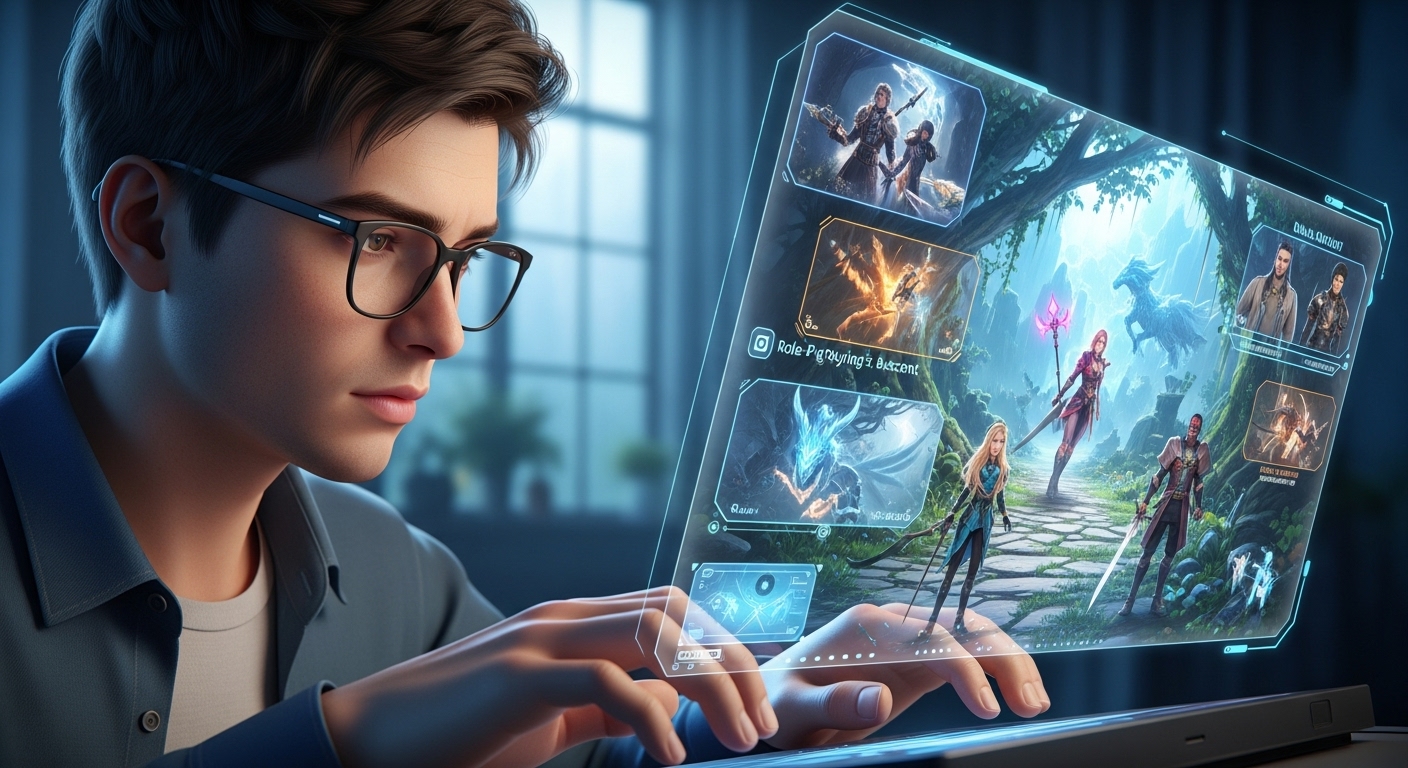Introduction to Indie Games and Their Growing Impact
Indie games have been steadily rising in popularity over the past decade, carving out a space in the gaming industry that values creativity, innovation, and passion over sheer scale and budget. Unlike blockbuster titles from major studios, indie games often emerge from small teams or even solo developers who take risks on unconventional gameplay mechanics, unique art styles, or emotional narratives. This year has been an exceptional one for indie games, as the community has seen the release of several groundbreaking titles that not only entertained players but also pushed the boundaries of what games can represent. From narrative-driven adventures to mechanically complex roguelikes and visually stunning platformers, indie developers have continued to prove that quality and creativity often outweigh flashy graphics or massive budgets. In this blog, we will explore the best indie games of the year, breaking down their unique qualities, the impact they have had on the industry, and why they stand out among hundreds of releases.
Why Indie Games Are Important in Today’s Market
Before diving into specific titles, it is crucial to understand why indie games matter in today’s gaming landscape. Triple-A publishers dominate the market with multimillion-dollar projects, but their games often follow safe formulas designed to maximize profits. Indie games, on the other hand, thrive on risk-taking. They experiment with new mechanics, deliver fresh storytelling perspectives, and often highlight voices and cultures that are overlooked by mainstream gaming. Moreover, indie games are typically more affordable and accessible, reaching broader audiences through digital storefronts such as Steam, itch.io, and various console marketplaces. This democratization of development tools has empowered creators worldwide to bring their visions to life. For players, this means discovering experiences that feel more personal and meaningful compared to many big-budget titles.
The Rise of Narrative-Driven Indie Games
One of the defining trends of indie games this year has been the dominance of narrative-driven experiences. Titles that focus on storytelling have captivated players with their emotional depth and immersive worlds. Games like these do not rely solely on action but instead prioritize player choices, dialogue, and character development. Narrative-focused indie games are appealing because they often tell stories not usually explored in mainstream titles. This year, several such games have stood out for their emotional resonance and innovative presentation, creating lasting impressions on players.
Standout Indie RPGs of the Year
Role-playing games have always been a fertile ground for indie developers to experiment with storytelling and gameplay mechanics. This year saw several indie RPGs that delivered powerful experiences, from deeply emotional storylines to innovative combat systems. Unlike traditional RPGs that often lean on complex graphics or expansive budgets, indie RPGs this year have succeeded by focusing on originality, player choice, and handcrafted worlds. Their pixel-art aesthetics or minimalist designs did not diminish their impact but instead heightened the charm and authenticity of the experiences.
Action and Roguelike Indie Hits
Roguelikes and action-focused games are another category where indie developers have excelled this year. Players have come to expect challenging gameplay, dynamic combat, and procedural generation that keeps every run unique. Many of the best indie roguelikes of the year balanced difficulty with rewarding progression systems, ensuring that players felt accomplished even after failing repeatedly. These games have built dedicated fanbases who thrive on mastering their mechanics and pushing their skills to the limit. Furthermore, roguelikes often embody the indie spirit, since their repetitive yet rewarding structures allow smaller teams to deliver hundreds of hours of gameplay without requiring massive resources.
Puzzle and Platforming Excellence
Puzzle and platformer games have always been staples in the indie scene, and this year proved no different. Developers released titles that challenged players to think creatively and navigate intricately designed levels filled with obstacles and clever mechanics. Indie platformers in particular excel at blending artistic visuals with satisfying gameplay, ensuring that players are both visually captivated and mechanically engaged. Puzzle games also pushed boundaries with innovative problem-solving approaches, ensuring that no two titles felt the same. These games reminded players that sometimes simplicity in design can lead to profound depth in experience.
Unique Art Styles and Soundtracks
One of the hallmarks of indie games is their emphasis on aesthetics and atmosphere. Without the pressure of conforming to mainstream industry trends, indie developers often embrace unconventional art styles, from hand-drawn illustrations to retro-inspired pixel art or experimental 3D designs. This year saw games that stood out visually, leaving players in awe with their artistry. Alongside visuals, soundtracks played a major role in defining these experiences. Many indie games released this year featured original scores that perfectly complemented their tone, whether melancholic, uplifting, or adrenaline-pumping. These elements elevated indie titles to works of art that rival any medium.
Representation and Diversity in Indie Games
A major reason why indie games resonate with players is their commitment to telling diverse stories and representing different perspectives. Unlike mainstream titles that often stick to familiar tropes, indie developers this year have explored themes of identity, mental health, cultural heritage, and personal struggle. Games that reflect diverse backgrounds allow players to connect on a deeper level, offering windows into lives and experiences they may not otherwise encounter. This inclusivity has not only expanded the audience for indie games but has also shown that gaming can be a powerful medium for empathy and understanding.
Community and Indie Game Development
Another crucial aspect of indie games is the role of community. Many indie developers rely on platforms like Kickstarter, Patreon, or early access programs to fund their projects, which builds a loyal base of players even before the game’s release. This year highlighted how strong community support can elevate a game’s success. Players not only provided financial backing but also valuable feedback that shaped the final product. Indie developers often maintain closer connections to their audience compared to larger studios, creating an atmosphere of collaboration and trust.
Breakout Indie Success Stories of the Year
Every year, there are a handful of indie games that transcend the niche community and break into mainstream recognition. These titles often receive critical acclaim, win awards, and achieve commercial success that rivals major releases. This year saw several indie breakout hits that dominated conversations across gaming forums, social media, and even award shows. Their success stories prove that indie games are no longer seen as “smaller” alternatives but rather as legitimate contenders for Game of the Year recognition.
Innovation and Experimentation in Gameplay
One of the most exciting aspects of indie games is their willingness to innovate. This year featured games that redefined genres, mixed gameplay mechanics in unexpected ways, or offered entirely new experiences. From experimental storytelling techniques to gameplay systems that defied convention, indie developers showed that creativity knows no bounds. These innovative titles may not appeal to everyone, but they pave the way for future trends in the industry and inspire both players and developers alike.
Indie Games and Streaming Culture
Streaming platforms like Twitch and YouTube have become essential for the success of indie games. Many of this year’s best indie titles gained traction because streamers showcased them to massive audiences. These platforms create viral moments that elevate indie games beyond their initial niche, turning them into cultural phenomena. Developers have embraced this shift, designing games that encourage viewer interaction or generate entertaining moments for live audiences. This symbiotic relationship between indie games and streaming has played a major role in their visibility and success this year.
The Role of Awards and Recognition
Indie games have increasingly gained recognition in gaming awards shows, further cementing their place in the industry. This year, many of the best indie games received nominations and even won prestigious awards, often outshining major titles. Awards not only provide validation for developers but also increase visibility for their games, allowing them to reach wider audiences. This acknowledgment helps sustain the indie ecosystem by proving that small-scale projects can achieve critical acclaim on par with larger productions.
Challenges Faced by Indie Developers
While the success stories are inspiring, it is important to acknowledge the challenges indie developers face. Limited budgets, small teams, and marketing struggles often create hurdles for releasing a successful game. Many indie projects never make it past development due to financial or logistical difficulties. Despite these obstacles, the resilience of indie developers this year has been remarkable. They continue to push boundaries, often fueled by passion and community support rather than profit margins. These challenges make the successes of this year’s best indie games even more impressive.
Looking Ahead: The Future of Indie Games
The trajectory of indie games suggests an even brighter future. With powerful tools becoming more accessible, digital distribution expanding, and communities continuing to support independent creators, indie games are poised to grow even further. Looking ahead, we can expect more cross-platform releases, deeper storytelling, and even more diverse perspectives. Indie developers will likely continue to lead the charge in experimentation, influencing mainstream studios to take more creative risks as well.
Conclusion: Why This Year Belongs to Indie Games
This year has proven once again that indie games are not just a side category of the gaming industry but a driving force in innovation and creativity. From emotionally powerful narratives to groundbreaking mechanics and visually stunning designs, indie developers have given players unforgettable experiences. They have shown that passion, creativity, and community can overcome financial limitations or lack of resources. The best indie games of the year have not only entertained but also inspired, leaving a lasting mark on players and shaping the future of gaming as a whole.



